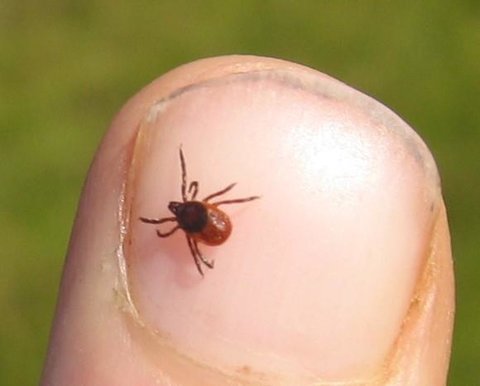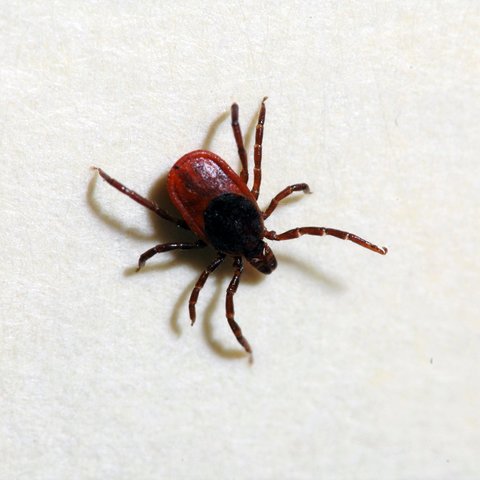Appearance
Ixodes scapularis, also known as the blacklegged tick, goes through three life cycle stages with distinct appearances. Their appearance also changes depending on whether or not they’ve recently taken a blood meal. Unengorged, they are small (adults are only about the size of a sesame seed) flat and oval shaped. They are dark reddish brown in color and have 8 legs. Nymphs (baby ticks) and larvae are smaller but also dark in color and oval in shape. Tick nymphs look very similar to poppy seeds!
Engorged ticks are ticks that have recently taken a blood meal. These are round in shape and their abdomen appear darker in color.
What does it eat?
Ticks exclusively feed on blood from hosts such as deer, mice, birds or other mammals. Their host depends on their lifecycle stage. Nymphs will feed on a mice and birds, while adults feed mostly on white tailed deer.
Where does it get its name?
Ixodes scapularis is commonly known as the blacklegged tick, because of its black legs. Sometimes, it is also occasionally referred to as the deer tick. This is because it was believed at one time that blacklegged ticks and deer ticks were separate species. It was proven they are the same tick and naming preference goes to the originally named tick, i.e. blacklegged tick.
Where and when do you find them?
Ixodes scapularis is distributed across the Eastern half of the United States, as far north as Minnesota and as far south as Texas. Its habitat distribution seems to be somewhat dependent on humidity, lower elevation and the presence of one of its hosts, the white tailed deer.
They are found in forested areas with plenty of leaf litter, brush and grasses.
Ticks are most active March through October, though the greatest risk of infection occurs during June and July.
Importance to Minnesotans
Ixodes scapularis spreads a number of diseases that can pose health threats, most famously, Lyme Disease (Borrelia bergdorferi). Lyme disease is a bacterial infection that, while not fatal, can have serious health effects if left untreated. There are approximately 1,000 cases of Lyme disease reported in Minnesota each year.
Ticks can also bite non-human residents of Minnesota, such as dogs and cats.
Fun Facts
Ticks do not fly or jump- they only crawl. They will only seek hosts from ground level or close to it. While waiting for a host to pass by, adult ticks will engage in “questing” behavior by sitting on the tip of vegetation and reaching out their front legs until a host passes by.
Ticks have a two year life cycle; below freezing weather does not kill ticks though they are less active in cold weather.
For more information
- https://www.health.state.mn.us/diseases/tickborne/ticks.html
- https://www.tickipedia.org/tick-myths/
- https://extension.umn.edu/yard-and-garden-insects/ticks
Author
- Lina Thiel
Photo credit
- Stuart Meek (first photo)
- Jeff Hahn




